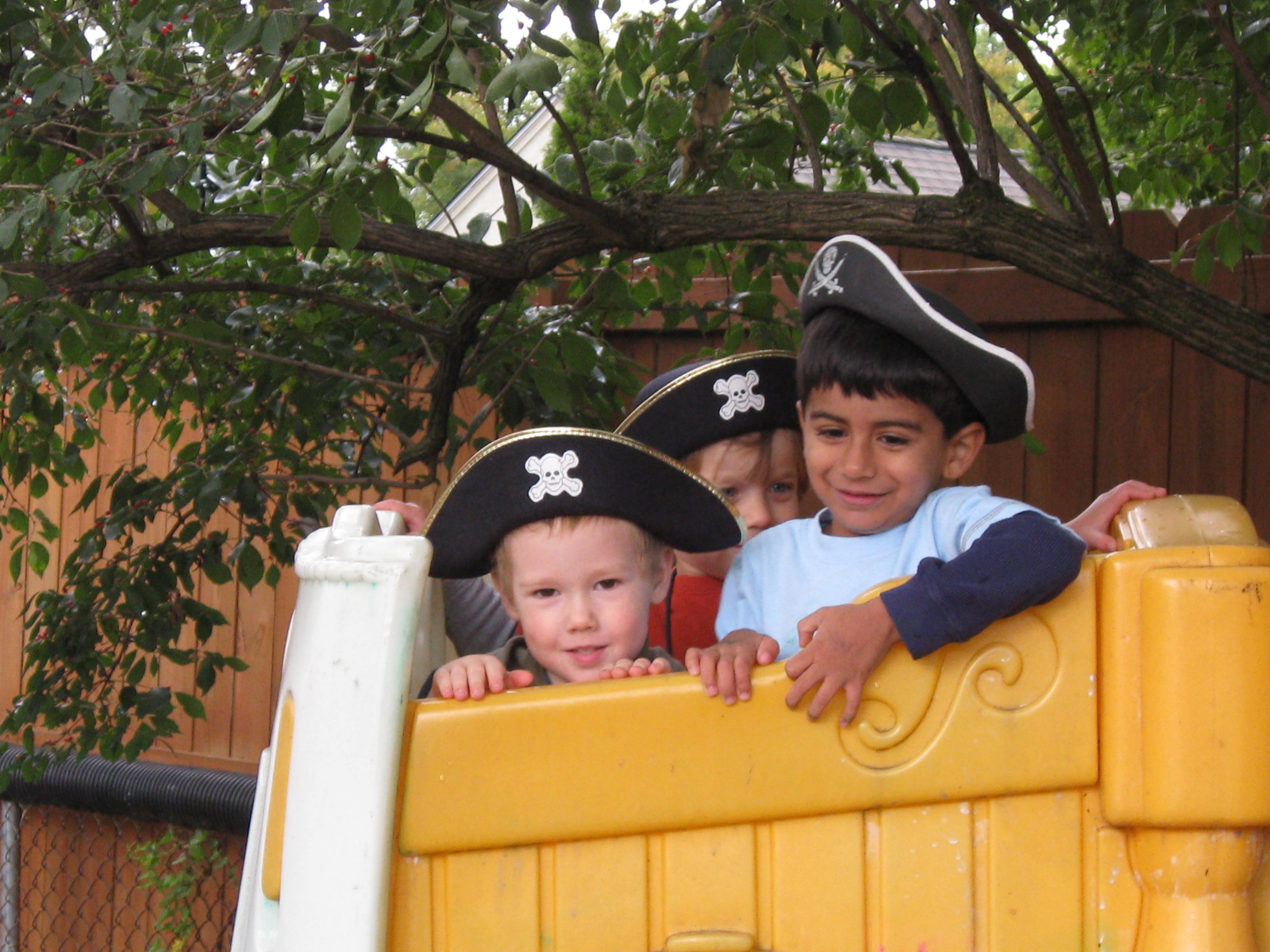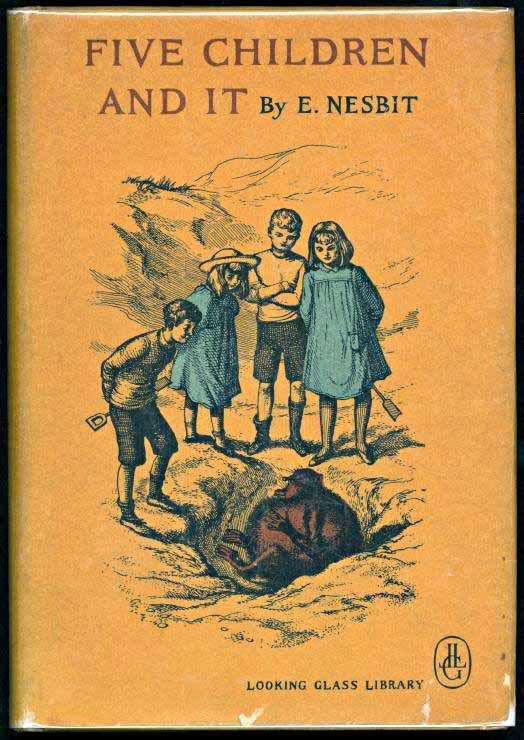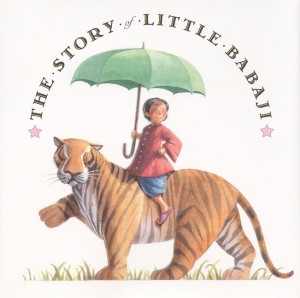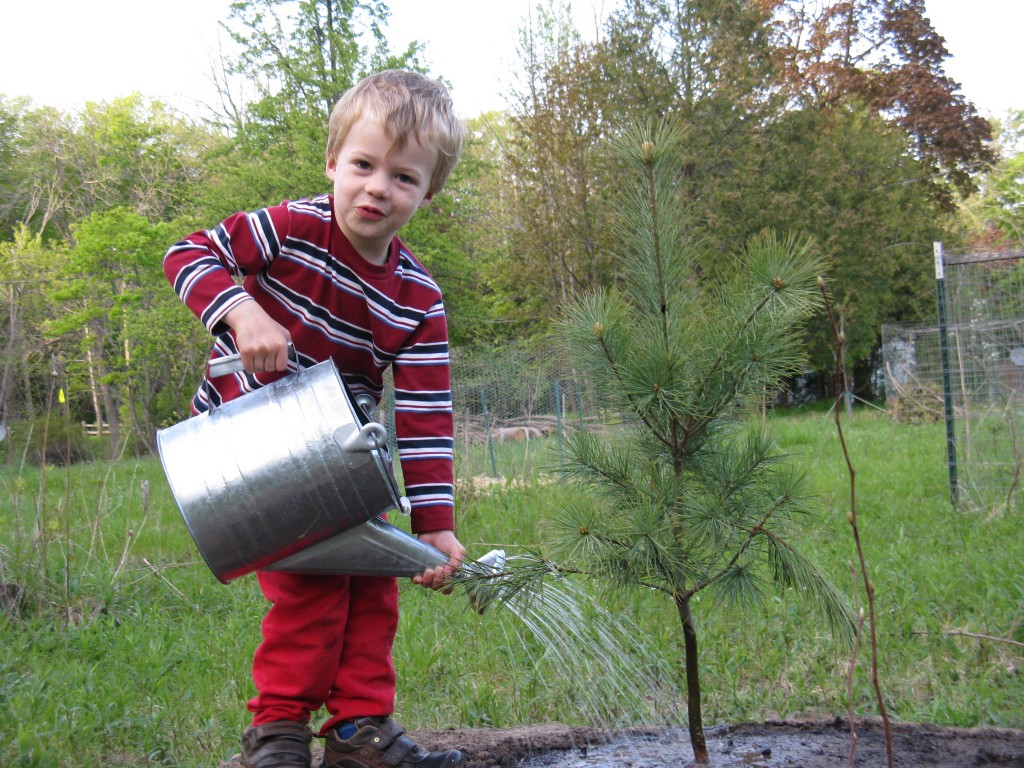A World of Books and Children
Search and enjoy 8 years of posts chock-filled with ideas from It’s OK Not to Share and beyond.
Play gets a lot of lip-service in America. You'll find most preschools and kindergartens say they are "play-based." That's because young children learn best through play. But I'm afraid they get it wrong.
One of the scourges of true play is what is known as "centers." The Block Center. The Housekeeping Center (toy kitchen/ house). The Art Center. Etc. Typical "play time" means the kids rotate between these various centers and the teacher times them by blowing a whistle or sounding another alarm to tell each group to move on.
This interrupts play. Interrupts ideas. Interrupts social interactions. Interrupts learning.
One of the most fundamental rights in childhood is the Right to Uninterrupted Play during Playtime. This means kids have the right to explore their own ideas and given ample time to do it.
Centers fragment time - Kids need big blocks of time to play. When they are limited to less than 30 minutes, play becomes less complex and sophisticated. In fact, 45 minutes is the minimum amount of time most preschoolers need to develop deep play. And that's just the beginning. Once play is developed, it needs to be sustained for some time. Researchers suggest blocks of 1-2 hours. Centers and constant alarm-clocks upset this. 15 minutes here. 15 minutes there. Shallow play.
Centers segregate props - Kids need props to play. Creative play usually entails dragging the blocks into the kitchen space to build a chimney or a spaceship. Yarn from the art table could be turned into a tiger trap in another area. Sure, at pick-up time, toys and materials can go back where they belong (where they can be found easily), but kids need to move objects from place to place. Books should be in the block area. Blocks should be wherever they are needed for the play idea.
Centers restrict interests - I'm sure the adult view is that kids "need to be exposed" to a variety of different activities. Adults assume it isn't good for a child to spend all their time on one type of play. But young kids tend to seek out the type of play that is most meaningful to them at the time. Sometimes children need to explore an intense interest. That's OK. If a 4-year-old wants to spend all morning at the water table, so be it. We need to trust a child's choice of play during playtime.
"Play is the highest expression of human development in childhood, for it alone is the free expression of what is in a child's soul." - Friedrich Froebel, founder of Kindergarten
Child's play, the true meaning of play, is spontaneous, child-initiated and child-directed. This doesn't happen in centers. Children have the right to uninterrupted play -- with ample time, no 10-minute alarms, and flexibility to develop creative ideas. Otherwise we are stunting children's real learning.
Have you ever questioned centers? Seen them in action? How can we best support children's true play?
Read more about Children's Rights, true play and the Right to Uninterrupted Play in It's OK Not to Share...And Other Renegade Rules, named one of the Best Parenting Books of 2012 by Parents magazine reviewer.
A librarian recently told me about the purging system librarians use. "You can't expect kids today to like the books their parents liked. People always think they can read their childhood favorites to kids. It just doesn't work."
I beg to differ.
We read shelves of old-fashioned books in our house. Some are classics, some may not be, but they all hold childhood memories for me and my family. The reason I read them again is I believe these books have deep resonance for kids. These particular books stuck with me all these years for a reason. Some truth about fairness. Or friendship. Or adventure. Or silliness. When a book strikes a chord with a child, that same chord can be struck years later in the heart of another child.
We may be living in the 21st century, but stories endure. We are human.
If you've ever wondered whether you should drag out an old favorite, fearing it may be too dated, boring, racist or just plain irrelevant, read on.
Good stories connect generations One of the most beautiful things in life is sharing books you read as a child. I loved the old books my mother and grandmother read to me. They connected me to their lives and history long ago.
Modern kids will "get it" If it's a good story, children will get the story and characters, despite any antiquated wording. In fact, it's excellent vocabulary building. Why should sophisticated vocabulary and sentence structure be banished these days? Beatrix Potter used words like "soporific" in her bunny tales.
Make older books read-alouds Guide the reading experience by reading aloud. This helps with sophisticated vocabulary and gives you a chance to have an open conversation about historical context. "Back then they didn't think women were smart enough to vote."
Balance books from other perspectives Go ahead and read Peter Pan in the original. The story is classic magic and adventure, and J.M. Barrie's text is much less racist than the Disney version. Explain what's dated and deceptive about the depictions of Native Americans, and that it's a white Englishman from 100 years ago writing the story. Be sure to read plenty of books from Native American perspectives, including true stories of Squanto's kidnapping and the invasion of America. Kids can understand whose point of view a story is coming from. Balance it out, talk about it. Being able to see things from a variety of perspectives is a big step in tolerance and moral development.
Discover revised editions Some old classics are just so hideously racist that they have been redone for modern readers. Of course, some have been consigned to the dust heap (thank goodness!) but a few books endure because the underlying story is so engaging. Deeply offensive originals like Little Black Sambo (now The Story of Little Babaji) and The Story of Dr. Doolittle have renewed editions that rewrite the abhorrent parts and offer readers new pictures. The new Little Babaji book, for example, rightly sets the book in India, replaces names, and offers gorgeous watercolor illustrations (see more discussion here on Love Isn't Enough, a colorstruck blog).
Consider the museum My dad once showed me a WW II propaganda book showing Japanese people as subhuman. It was issued by the US government during his youth. By then I was in high school and understood the shock value of the book. Seeing how far we've come has its place, but save this for older readers. If you have disturbing historical items, donate them to the Jim Crow Museum. This excellent program collects and displays racist memorabilia to promote social justice and tolerance.
Focus on the main story Some of my childhood favorite picture books put mom squarely in the kitchen with an apron and dad coming home from work. Treat them as one type of family. Read stories about other types of families. The true gem of each book lies in the storyline (The Tiger Who Came to Tea is a silly book about a tiger eating all the food; kids rarely focus on who's cooking dinner).
Savor the history lesson Little House on the Prairie, The Secret Garden, The Phoenix and the Carpet, Mary Poppins - these books are from a time gone by. Enjoy the history lesson with your child.
What are your favorite childhood books? Do people read them anymore? Would you share them with a child?
Last week my kids helped me celebrate my birthday with a new family tradition: Reciting poetry. I asked everyone to memorize a poem and recite it on my birthday. The result was lovely. I felt serenaded. The kids glowed. Since we were with cousins and grandparents, I received six poems altogether, ranging from William Blake to A. A. Milne.
My gift is their gift. Over the years this tradition will give my kids a rich heritage of memorized poems. They are giving me a birthday serenade. I am giving them thoughts and rhythms that can see them through joyful and melancholy times. It's partly sharing joy in literature. It's partly giving them tools to accept every emotion.
Memorizing poetry is one way we can intentionally parent.
What skills and heritage DO we want to pass on to our kids? We need to make room for these priorities, whatever they are. Here's a list of ideas I consider essential -- skills and lessons I try to incorporate into our lives.
- Healthy attitudes toward death and life cycles
- Money management, including saving and the ability to delay gratification
- Cooking skills, nutritional choices and stopping when you're "almost full"
- Basic chores and life skills - how to sweep a floor, set a table, make a bed
- Neighborliness - knowing our neighbors, spending time with them, reciprocating kindness, checking on elderly neighbors
- Family heritage - a knowledge of our family trees, story telling about family history, repeating these stories many times
- Perspective - we are one among 7 billion unique humans
- Magnificence - a sense of wonder and responsibility toward other species
- Seasonal traditions - singing parties, camping trips, celebrations
- Balancing outside messages - identifying ads, going deeper with school history lessons
- Accepting all emotions - understanding that being fully human means experiencing the full range of human emotions
Of course, there's more. This is a partial list. But it's good to remind ourselves what's truly important, what we truly hope to pass on when we interact with kids and set daily (or yearly) rituals.
What would you add to this list? What family lessons or traditions do you treasure today?




